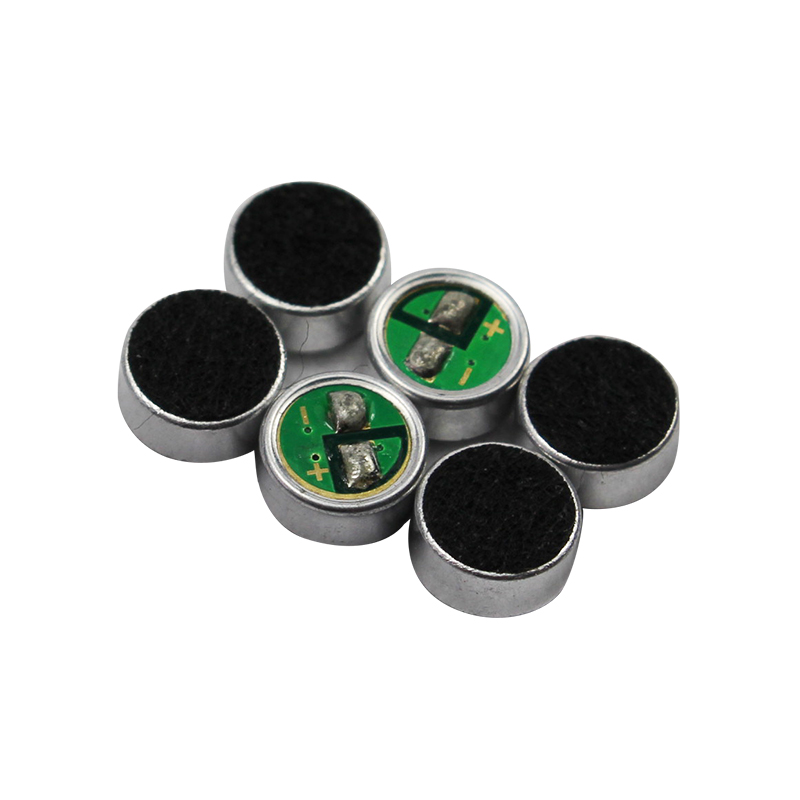Electret Condenser Microphones (ECMs) offer several advantages over traditional dynamic microphones, primarily in terms of sensitivity, frequency response, and compactness. Here’s a detailed look at the key benefits:
Higher Sensitivity
More Accurate Sound Capture: ECMs are much more sensitive than dynamic microphones, meaning they can capture quieter sounds and pick up finer details in audio. This makes them ideal for use in situations where clarity and precision are essential, such as studio recording, broadcasting, and audio forensics.
Better Low-Level Detail: The high sensitivity of ECMs allows them to capture subtle nuances of sound, which is beneficial in applications like voice recording, musical instrument capture, and speech recognition.
Wider Frequency Response
Broad Range: ECMs typically have a wider frequency response compared to dynamic microphones. While dynamic mics may be limited to a frequency range of about 40 Hz to 15 kHz, ECMs can cover a broader spectrum, often reaching up to 20 kHz or more, which is closer to the full range of human hearing.
Better High-Frequency Reproduction: The extended frequency response of ECMs allows them to reproduce higher frequencies more accurately, which is important for applications like high-fidelity sound recording, broadcasting, and capturing musical instruments with lots of high-frequency content (e.g., cymbals, strings).
Higher Output Level
Louder Output: ECMs generally produce a higher output signal level than dynamic microphones, which can be beneficial in certain recording and amplification scenarios. They don’t require as much preamplification as dynamic microphones, making them more efficient in terms of power usage.
Better Transient Response
Quick Response to Changes in Sound: ECMs typically exhibit a better transient response than dynamic microphones. This means they can more accurately capture rapid changes in sound, such as the quick attack of a snare drum or the fast plucking of strings. This is particularly important for high-quality audio recordings in both music and speech.
Compact Size
Miniaturization for Portable Devices: ECMs are much smaller and more compact than dynamic microphones, making them ideal for use in portable devices like smartphones, hearing aids, cameras, laptops, and other miniaturized audio equipment. Their small size allows them to fit into thin or tight spaces without sacrificing sound quality.
Flexible Integration: The small size of ECMs allows for easier integration into consumer electronics and other compact systems where space is limited, such as in wireless microphones, in-ear monitors, and small handheld recorders.
Low Power Consumption
Efficient for Battery-Powered Devices: Unlike traditional condenser microphones that require phantom power, electret condenser microphones use a built-in charge (the electret material) and typically require much lower voltage to operate. This makes them ideal for battery-powered devices, where power efficiency is crucial.
Longer Battery Life: The low power demand means that ECMs are well-suited for use in portable devices like portable recorders, wireless microphones, and hearing aids, where conserving battery life is important.

More Linear Response
Accurate Representation of Sound: ECMs tend to have a more linear frequency response, meaning they capture the full spectrum of sound in a balanced way without as much coloration. This makes them more faithful to the original sound source compared to dynamic microphones, which can sometimes add a slight coloration, especially in the low-end frequencies.
Greater Detail in High-Resolution Audio
Enhanced Audio Quality: Because of their sensitivity and wide frequency response, ECMs are well-suited for high-resolution audio recording and playback, such as in digital audio workstations (DAWs), audiophile equipment, and professional sound studios. They are often preferred in contexts where high-fidelity and detail are crucial.
Better for Voice Recording
Clarity in Speech: ECMs are commonly used in voice recording applications, including voice assistants, telephones, and communication systems, due to their ability to capture clear, accurate, and natural-sounding speech. Their sensitivity to high frequencies helps with the intelligibility of speech, making them ideal for telecommunication and voice recognition systems.
More Versatile Polar Patterns
Adaptability: Electret condenser microphones can be manufactured in a variety of polar patterns (such as omnidirectional, cardioid, or supercardioid), giving them greater flexibility for different recording environments. This makes them suitable for both controlled studio settings and dynamic, real-world applications.
Lower Distortion at High Sound Pressure Levels (SPL)
Handling Loud Sounds: Although not as robust as dynamic microphones when it comes to handling extreme SPLs (like those found in loud concerts), electret condenser microphones generally perform better at moderate-to-high SPLs compared to traditional condenser microphones. Some models feature internal circuits that help prevent distortion at higher sound levels, making them versatile for a wide range of applications.


 EN
EN  English
English Deutsch
Deutsch 中文简体
中文简体
